Peer-Reviewed Research
14 articles in this category
-
 This article 'Prevalence of disorders recorded in dogs attending primary-care veterinary practices in England' is available Open Access in full for free.
This article 'Prevalence of disorders recorded in dogs attending primary-care veterinary practices in England' is available Open Access in full for free.- Purebred dog health is thought to be compromised by an increasing occurence of inherited diseases but inadequate prevalence data on common disorders have hampered efforts to prioritise health reforms. Analysis of primary veterinary practice clinical data has been proposed for reliable estimation of disorder prevalence in dogs. Electronic patient record (EPR) data were collected on 148,741 dogs attending 93 clinics across central and south-eastern England. The results suggest that, for maximal impact, breeding reforms should target commonly-diagnosed complex disorders that are amenable to genetic improvement and should place special focus on at-risk breeds. Future studies evaluating disorder severity and duration will augment the usefulness of the disorder prevalence information reported herein.
- 0 comments
- 2,110 views
-
 This article 'Prevalence and risk factors for mast cell tumours in dogs in England' is available Open Access in full for free.
This article 'Prevalence and risk factors for mast cell tumours in dogs in England' is available Open Access in full for free.- Mast cell tumour (MCT) appears to be a frequent tumour type in dogs, though there is little published in relation to its frequency in dogs in the UK. The current study aimed to investigate prevalence and risk factors for MCTs in dogs attending English primary-care veterinary practices.Electronic patient records from practices participating in the VetCompass animal surveillance project between July 2007 and June 2013 were searched for MCT diagnosis. MCT prevalence for the entire dataset and specific breed types were calculated. This study highlights a clinically significant prevalence of MCT and identifies specific breed types with predisposition to MCT, potentially aiding veterinarian awareness and facilitating diagnosis.
- 0 comments
- 2,354 views
-
 Abstract In both popular media and scientific literature, it is commonly stated that breeds of dogs differ behaviorally in substantial, consistent and predictable ways. Since the mid-twentieth century, scientists have asked whether meaningful behavioral differences exist between breeds of dogs. Today, there are over 1000 identified dog breeds in the world, but to date, fewer than one-quarter of these are represented in studies investigating breed-specific behavioral differences. We review here s
Abstract In both popular media and scientific literature, it is commonly stated that breeds of dogs differ behaviorally in substantial, consistent and predictable ways. Since the mid-twentieth century, scientists have asked whether meaningful behavioral differences exist between breeds of dogs. Today, there are over 1000 identified dog breeds in the world, but to date, fewer than one-quarter of these are represented in studies investigating breed-specific behavioral differences. We review here s- In several of the action items identified as need for international efforts related to dog behaviour (in a broad sense) the issue of breed differences - in, e.g. reaction to and evaluation on various difference tests; and genetic and breeding considerations was raised. This is a topic of interest in the behaviour literature as evidenced by the excerpts below. As is often the case, this material is hard for the breeding public to access and we need to find ways to bring to the people on the front lines the most salient and applicable findings from the academic world. In June 2014, Lindsay R. Mehrkam and Clive D.L. Wynne, presented Behavioral differences among breeds of domestic dogs (Canis lupus familiaris): Current status of the science in Volume 155, Pages 12–27; Applied Animal Behavior Science
- 0 comments
- 4,071 views
-
 This article 'Approaches to canine health surveillance' is available Open Access in full for free.
This article 'Approaches to canine health surveillance' is available Open Access in full for free.- Effective canine health surveillance systems can be used to monitor disease in the general population, prioritise disorders for strategic control and focus clinical research, and to evaluate the success of these measures. The key attributes for optimal data collection systems that support canine disease surveillance are representativeness of the general population, validity of disorder data and sustainability. Limitations in these areas present as selection bias, misclassification bias and discontinuation of the system respectively. Canine health data sources are reviewed to identify their strengths and weaknesses for supporting effective canine health surveillance. It is concluded that active collection systems using secondary health data provide the optimal resource for canine health surveillance.
- 0 comments
- 2,362 views
-
 Link to PubMed Reference J Anim Breed Genet. 2015 Apr 27. doi: 10.1111/jbg.12149. [Epub ahead of print] Genetic management of Dutch golden retriever dogs with a simulation tool Windig JJ1, Oldenbroek K. Author information Abstract Excessive inbreeding rates and small effective population sizes are an important problem in many populations of dogs. Proper genetic management of these populations can decrease the problem, and several measures are available. However, the effectiveness of these me
Link to PubMed Reference J Anim Breed Genet. 2015 Apr 27. doi: 10.1111/jbg.12149. [Epub ahead of print] Genetic management of Dutch golden retriever dogs with a simulation tool Windig JJ1, Oldenbroek K. Author information Abstract Excessive inbreeding rates and small effective population sizes are an important problem in many populations of dogs. Proper genetic management of these populations can decrease the problem, and several measures are available. However, the effectiveness of these me- Check out the discussion thread on this article in the Members Forum started by Gregorie Leroy, entitled: "Number of Litters per Reproducer" in which he referenced this article: Genetic management of Dutch golden retriever dogs with a simulation tool
Windig JJ1, Oldenbroek K. Unfortunately, the article is not open access, but below we reproduce the abstract from PubMed.
The article may be purchased via the journal at: http://onlinelibrary.wiley.com/doi/10.1111/jbg.12149/full Hopefully, discussion will continue in the Forums on this important topic.
- 0 comments
- 3,117 views
-
 The authors' conclusions include: "We conclude that ample genetic variance in the NCD [number of calcified discs] is present in the Finnish Dachshund population studied. The heritability estimate for the trait was high, suggesting that breeding against the high NCD and thus against IDC [intervertebral disc calcification] is possible. Selecting Dachshunds with either no or only a few calcifications for breeding could reduce the NCD and thus also the IDC. " The authors caution that a widely re
The authors' conclusions include: "We conclude that ample genetic variance in the NCD [number of calcified discs] is present in the Finnish Dachshund population studied. The heritability estimate for the trait was high, suggesting that breeding against the high NCD and thus against IDC [intervertebral disc calcification] is possible. Selecting Dachshunds with either no or only a few calcifications for breeding could reduce the NCD and thus also the IDC. " The authors caution that a widely re Published in Aca Veterinaria Scandinavica Acta Vet Scand (2015) 57:78 Authors: Anu Katriina Lappalained and Outi Laitinen-Vapaavuori from the Faculty of Veterinary Medicine, University of Helsinki and Katariina Mäki from the Finnish Kennel Club. Their data included information on results for dogs screened as part of a collaborative project of the Finnish Dachshund Club. The material included 9027 dogs; 1567 with results for number of calcified discs (NCDs).
Published in Aca Veterinaria Scandinavica Acta Vet Scand (2015) 57:78 Authors: Anu Katriina Lappalained and Outi Laitinen-Vapaavuori from the Faculty of Veterinary Medicine, University of Helsinki and Katariina Mäki from the Finnish Kennel Club. Their data included information on results for dogs screened as part of a collaborative project of the Finnish Dachshund Club. The material included 9027 dogs; 1567 with results for number of calcified discs (NCDs).
- 0 comments
- 2,754 views
-

- Open access article:
History and structure of the closed pedigreed population of Icelandic Sheepdogs
- 0 comments
- 2,407 views
-
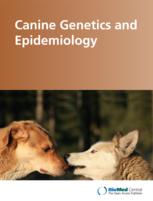
Canine Genetics and Epidemiology is a peer-reviewed, open access, online journal publishing original research and review articles relating to all aspects of canine genetics and epidemiology.
This resource provides access to many articles of interest to the dog community. Here we highlight one which is particularly well-matched with DogWellNet's focus. The challenges of pedigree dog health: approaches to combating inherited disease.Many references to KC's management of breeds, tools, schemes as well as a discussion of the future of pedigreed dogs, designer dogs, limitations of DNA tests, genetics of inherited disorders, etc...Be sure to see the additional tables (Table S1. Inherited disorders in pedigree dogs. and Table S2. Inherited disorders in pedigree dogs.) offered in this article.
ARTICLE: "Conclusion
In this review we provide an overview of the challenges facing breeders of pedigree dog breeds in combating inherited disease. Incentive programs, free diagnostic screening, and genetic testing days are already being implemented by breed clubs to help identify and diagnose inherited disorders in susceptible dog breeds, but public awareness of the importance of testing needs to be much improved. Testing and screening programs are vital to understanding both the prevalence and susceptibility to developing disease and creating breeding strategies with the aim of significantly reducing inherited disorders. DNA tests for disease causing mutation(s) will be most informative and effective for disease management but must be combined with current screening schemes, pedigree information, and if possible genomic selection, to maximize the impact in significantly reducing the number of inherited disorders and improving overall health in pedigree dogs. Recognition of the benefits of crossbreeding, acceptance for registration of dogs with a distant ancestor of another breed, and offspring limits imposed on stud dogs in Kennel Clubs worldwide would improve breed health without compromising many breed standards. Public awareness, education, and most importantly the support of breeders and/or breed clubs are significant factors in making these changes successful and common practice."
This article is referenced in Gregoire Leroy's Blog Post: Pride and crossbreeding at: http://dogwellnet.com/blogs/entry/43-pride-and-crossbreeding/
- 0 comments
- 2,502 views
 "Abstract The Norwegian Lundehund breed of dog has undergone a severe loss of genetic diversity as a result of inbreeding and epizootics of canine distemper. As a consequence, the breed is extremely homogeneous and accurate sex identification is not always possible by standard screening of X-chromosomal loci. To improve our genetic understanding of the breed we genotyped 17 individuals using a genome-wide array of 170 000 single nucleotide polymorphisms (SNPs). Standard analyses based on expe
"Abstract The Norwegian Lundehund breed of dog has undergone a severe loss of genetic diversity as a result of inbreeding and epizootics of canine distemper. As a consequence, the breed is extremely homogeneous and accurate sex identification is not always possible by standard screening of X-chromosomal loci. To improve our genetic understanding of the breed we genotyped 17 individuals using a genome-wide array of 170 000 single nucleotide polymorphisms (SNPs). Standard analyses based on expe- This paper describes genetic analysis of a breed facing significant challenges: the Norwegian Lundehund. See the paper here.
- PDF: esv031.pdf
This is an ancient breed - first developed 5 centuries ago - and it is now endangered. See a few excerpts from the research paper below:
- 0 comments
- 5,778 views
 Research Clonal Complexes and Antimicrobial Susceptibility Profiles of Staphylococcus pseudintermedius Isolates from Dogs in the United States Abstract "Staphylococcus pseudintermedius is the primary cause of canine pyoderma and has been associated with diseases in other animals, including human beings. A high prevalence of methicillin and multidrug resistance has been reported in this bacterium in some geographic regions of the United States. Multilocus sequence type (M
Research Clonal Complexes and Antimicrobial Susceptibility Profiles of Staphylococcus pseudintermedius Isolates from Dogs in the United States Abstract "Staphylococcus pseudintermedius is the primary cause of canine pyoderma and has been associated with diseases in other animals, including human beings. A high prevalence of methicillin and multidrug resistance has been reported in this bacterium in some geographic regions of the United States. Multilocus sequence type (M- Clonal Complexes and Antimicrobial Susceptibility
Profiles of Staphylococcus pseudintermedius
Isolates from Dogs in the United States Ricardo Videla, Samar M. Solyman, Akshar Brahmbhatt, Leslie Sadeghi, David A. Bemis, and Stephen A. Kania
- 0 comments
- 1,885 views
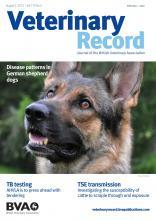
- This paper combined data from the Agria Insurance database and the health database of the Swedish Kennel Club. Disease patterns in 32,486 insured German shepherd dogs in Sweden: 1995–2006
Å. Vilson, DVM1, B. Bonnett, BSc, DVM, PhD2, H. Hansson-Hamlin, DVM, PhD, Ass.Prof1 and Å. Hedhammar, DVM, PhD, Prof, Dipl.Internal medicine (active) & clinical nutrition (passive)1 Abstract
The aims of this retrospective study were to describe the morbidity and mortality in German shepherd dogs (GSD) in Sweden, based on insurance data, and to test the hypothesis that GSDs are predisposed to immune-related diseases. Morbidity was defined as incidence rates and based on veterinary care events. Mortality was defined as mortality rates and based on life insurance data. The study included 445,336 dogs, 7.3 per cent GSDs, covered by both veterinary care and life insurance between 1995 and 2006 in the Swedish insurance company Agria (Agria Insurance Company, Stockholm, Sweden). For veterinary care events (morbidity) GSDs were most over-represented for immunological disease, with a relative risk (RR) of 2.7, compared with the risk in all other breeds combined. The most common disease category (morbidity) in GSDs was skin disorders with an incidence rate of 346.8 cases per 10,000 dog years at risk. The highest RR for cause of death in GSDs compared with all other breeds was for skin conditions (RR=7.8). Locomotor disorders were the most common cause of death in GSDs. The GSD is predisposed to immune-related disorders, such as allergies, circumanal fistulae and exocrine pancreatic atrophy, with significantly increased risk compared with all other breeds. Disese patterns_Åsa Vilson_vet rec.pdf
- 0 comments
- 2,692 views
 Genomic Analyses Reveal the Influence of Geographic Origin, Migration, and Hybridization on Modern Dog Breed Development Dog Genes Tell Surprising Tales Streamed live on Apr 6, 2017... Dr. Ostrander’s team has taken advantage of naturally occurring variations in dog populations in order to reveal the genetic mechanisms underlying both simple and complex traits. She will show how findings related to the genetic basis for
Genomic Analyses Reveal the Influence of Geographic Origin, Migration, and Hybridization on Modern Dog Breed Development Dog Genes Tell Surprising Tales Streamed live on Apr 6, 2017... Dr. Ostrander’s team has taken advantage of naturally occurring variations in dog populations in order to reveal the genetic mechanisms underlying both simple and complex traits. She will show how findings related to the genetic basis for- "In Brief
The domestic dog is divided into hundreds of island-like populations called breeds. Parker et al. examine 161 breeds and show that they were developed through division and admixture. The analyses define clades, estimate admixture dates, distinguish geographically diverse populations, and help determine the source of shared mutations among diverse populations."
- 0 comments
- 2,289 views
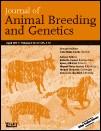
- This exciting research paper is from a PhD project involving several of our IPFD Partners and collaborators. It is the first step towards being able to access the vast data sources of various kennel clubs and to combine data across countries. Published in the
 J Anim Breed Genet. 2017 Apr;134(2):152-161. doi: 10.1111/jbg.12242. Epub 2016 Nov 10.
Merging pedigree databases to describe and compare mating practices and gene flow between pedigree dogs in France, Sweden and the UK
J Anim Breed Genet. 2017 Apr;134(2):152-161. doi: 10.1111/jbg.12242. Epub 2016 Nov 10.
Merging pedigree databases to describe and compare mating practices and gene flow between pedigree dogs in France, Sweden and the UK
S. Wang1,2,3, G. Leroy2,3, S. Malm4, T. Lewis5,6, E. Strandberg1 & W.F. Fikse1
1 Department of Animal Breeding and Genetics, Swedish University of Agricultural Sciences, Uppsala, Sweden
2 Genetique Animale et Biologie Integrative, AgroParisTech, Paris, France
3 Genetique Animale et Biologie Integrative, Paris, INRA, Paris, France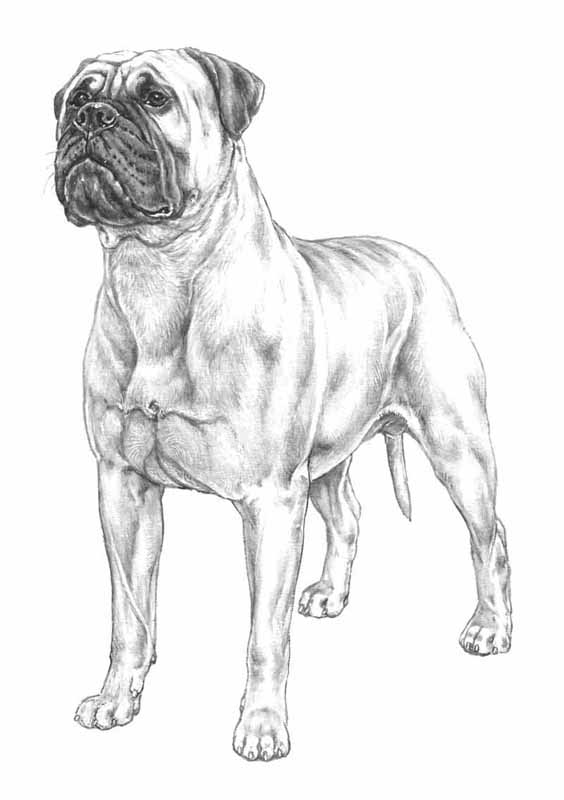
4 Swedish Kennel Club, Spanga, Sweden
5 The Kennel Club, London, UK
6 School of Veterinary Medicine and Science, The University of Nottingham, Nottingham, UK Summary
Merging pedigree databases across countries may improve the ability of
kennel organizations to monitor genetic variability and health-related
issues of pedigree dogs. We used data provided by the Societe Centrale
Canine (France), Svenska Kennelklubben (Sweden) and the Kennel Club (UK)
to study the feasibility of merging pedigree databases across countries and
describe breeding practices and international gene flow within the following
four breeds: Bullmastiff (BMA), English setter (ESE), Bernese mountain
dog (BMD) and Labrador retriever (LBR). After merging the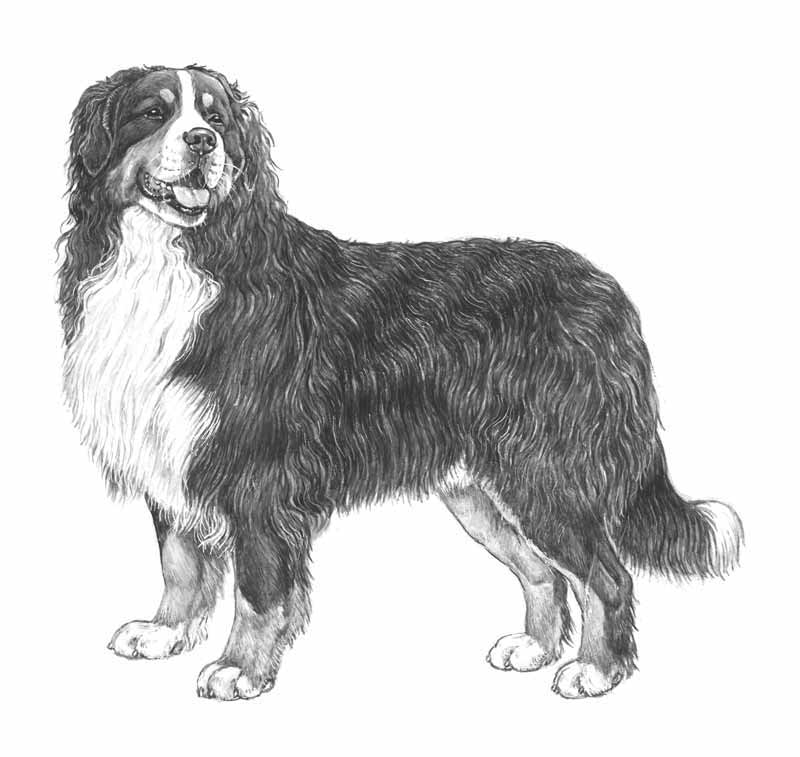 databases, genealogical parameters and founder contributions were calculated according to the birth period, breed and registration country of the
databases, genealogical parameters and founder contributions were calculated according to the birth period, breed and registration country of the
dogs. Throughout the investigated period, mating between close relatives, measured as the proportion of inbred individuals (considering only two generations of pedigree), decreased or remained stable, with the exception
of LBR in France. Gene flow between countries became more frequent, and the origins of populations within countries became more diverse over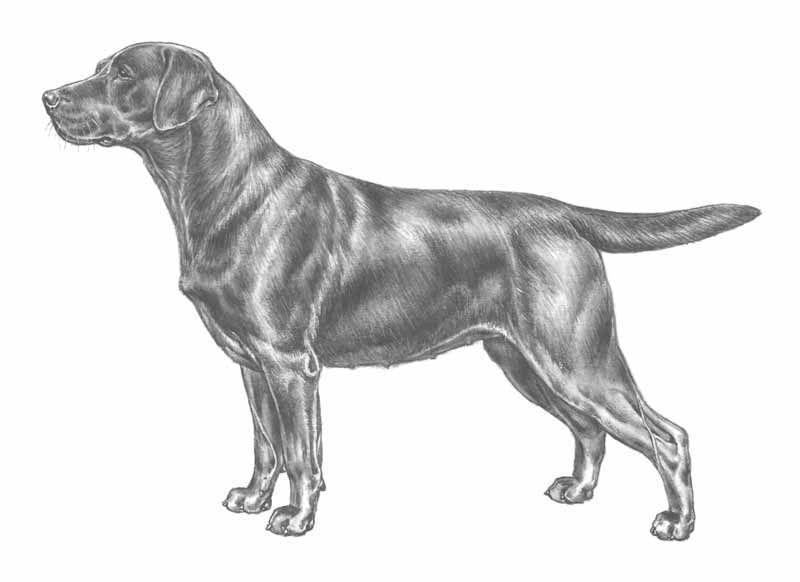 time.
In conclusion, the potential to reduce inbreeding within purebred
time.
In conclusion, the potential to reduce inbreeding within purebred
dog populations through exchanging breeding animals across countries was confirmed by an improved effective population size when merging populations from different countries. Wang_et_al-2016-Journal_of_Animal_Breeding_and_Genetics.pdf
- 0 comments
- 3,551 views
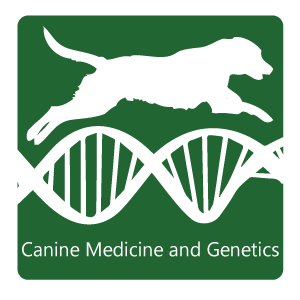 Canine Medicine and Genetics Journal ISSN: 2662-9380 BMC Breed-Specific Reports and Other References Breed-specific reports Pegram, C., Wonham, K., Brodbelt, D.C. et al. Staffordshire Bull Terriers in the UK: their disorder predispositions and protections. Canine Genet Epidemiol 7, 13 (2020). https://doi.org/10.1186/s40575-020-00092-w O’Neill, D.G., Rooney, N.J., Brock, C. et al. Greyhounds under general veterinary care in the UK during 2016: demograph
Canine Medicine and Genetics Journal ISSN: 2662-9380 BMC Breed-Specific Reports and Other References Breed-specific reports Pegram, C., Wonham, K., Brodbelt, D.C. et al. Staffordshire Bull Terriers in the UK: their disorder predispositions and protections. Canine Genet Epidemiol 7, 13 (2020). https://doi.org/10.1186/s40575-020-00092-w O’Neill, D.G., Rooney, N.J., Brock, C. et al. Greyhounds under general veterinary care in the UK during 2016: demographThis article provides a list of references to articles published in the Canine Medicine and Genetics Journal.
Read more about IPFD's collaborator, Canine Medicine and Genetics which is a peer-reviewed, open access journal addressing genetic, genomic and epidemiological research in both domestic and wild canids, relating to breed and species diversity, and canine evolution. The articles, published from 2014 - 2021, are open access; many have been shared throughout the years on DogWellNet. Primarily the articles/research covers dogs living in the United Kingdom.
- 0 comments
- 1,181 views
Important Information
By using this site, you agree to our Terms of Use.



